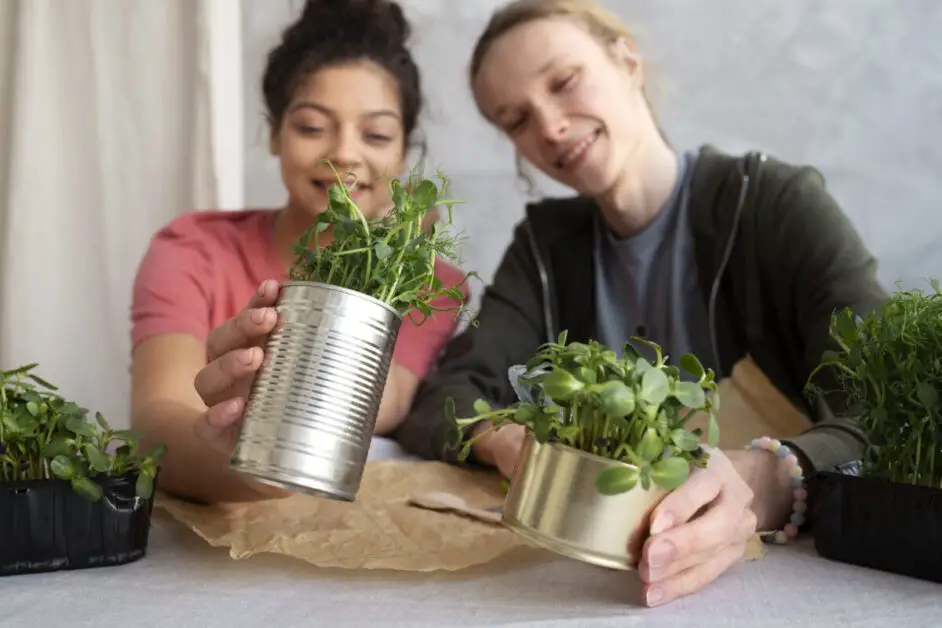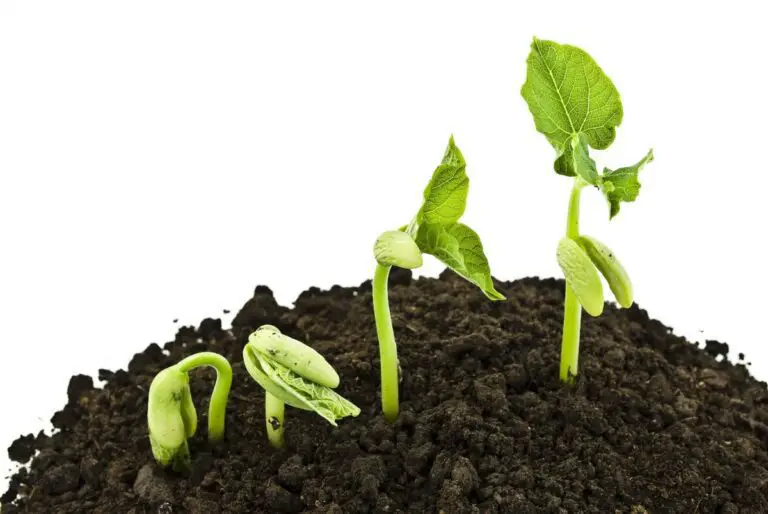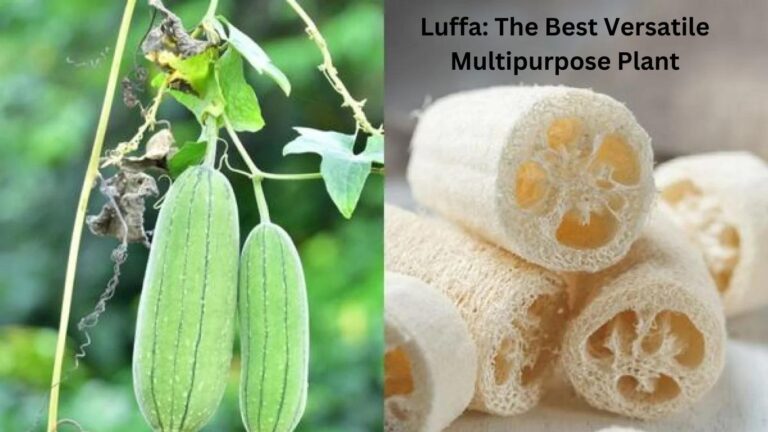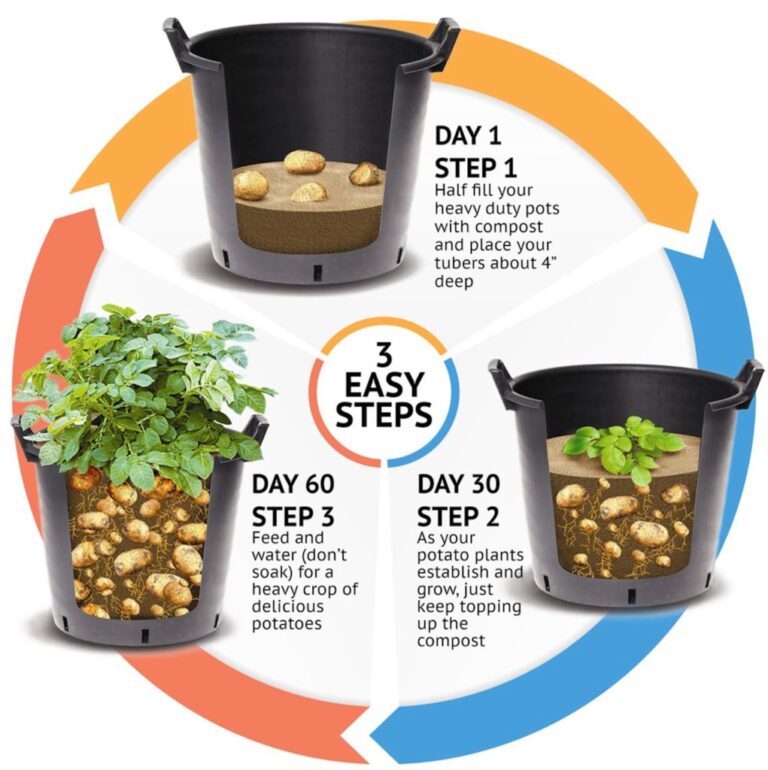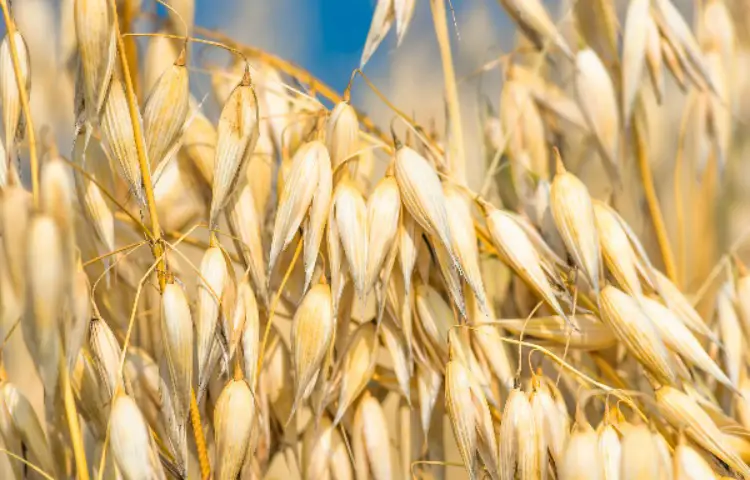How to Grow Your Fresh Herbs at Home: A Beginner’s Guide
Table of Contents
Choosing the Right Herbs for Your Home Garden
When it comes to choosing the right herbs for your home garden, there are several factors to consider. First and foremost, think about your personal preferences and the types of flavors and scents you enjoy. Are you a fan of aromatic herbs like basil and rosemary, or do you prefer the earthy flavors of thyme and sage? Understanding your tastes will help guide you in selecting the herbs that will bring the most enjoyment to your culinary adventures.
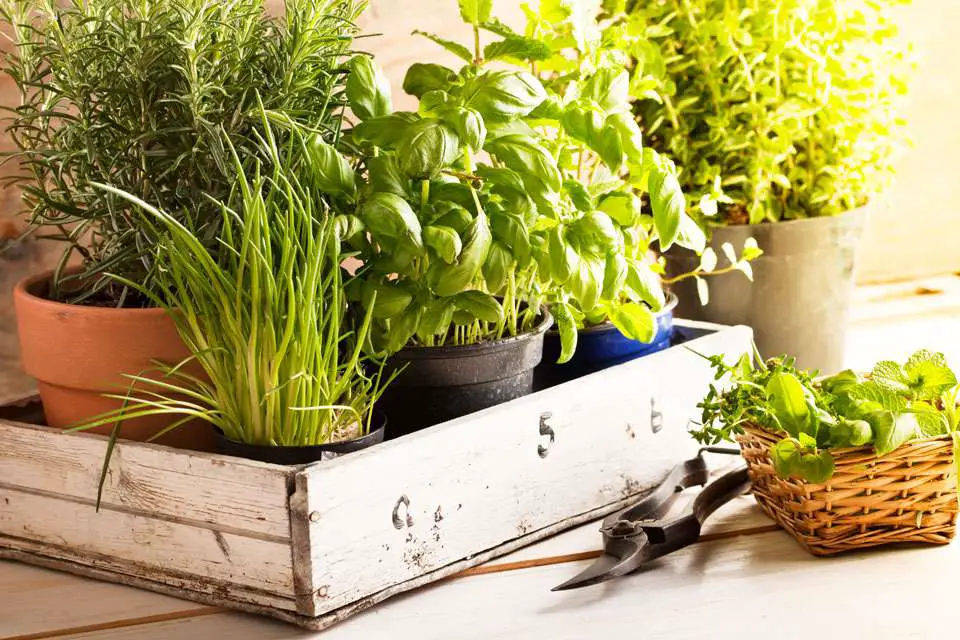
Another important factor in choosing the right herbs is to consider the growing conditions in your garden. Different herbs have different requirements when it comes to sunlight, water, and soil type. For example, herbs like lavender and oregano thrive in full sun and well-drained soil, while herbs like mint and parsley prefer partial shade and moist conditions. Take note of the environmental conditions in your garden and research the specific requirements of the herbs you are considering to ensure a successful growing season.
By carefully considering your preferences and the growing conditions in your garden, you can choose the right herbs that will flourish and add a delightful touch to your home garden. Whether you are a seasoned gardener or just starting, the joy of growing and using fresh herbs is sure to enhance your culinary experiences and bring a sense of satisfaction to your gardening endeavors.
Selecting the Ideal Location for Herb Growth
To ensure the optimal growth of your herbs, selecting the right location is crucial. Herbs thrive under specific conditions, and by providing them with the ideal environment, you can promote their growth and enhance their flavors and aromas.
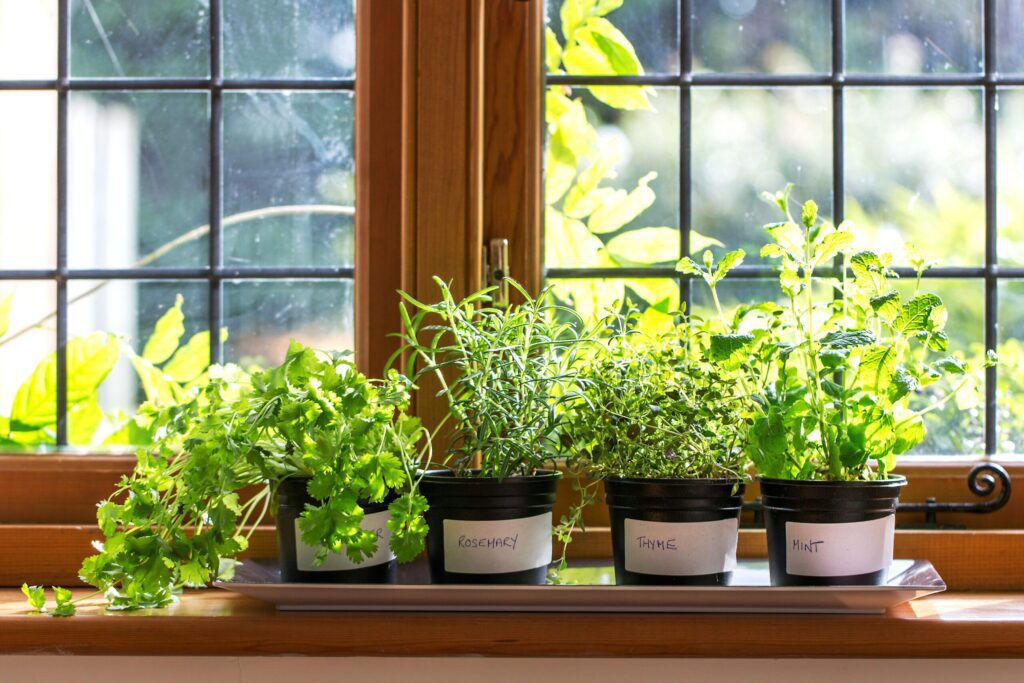
When choosing a location for your herb garden, it’s important to consider the amount of sunlight the area receives. Most herbs thrive in full sun, which is defined as at least six hours of direct sunlight per day. If you have a spot in your garden that meets this requirement, it would be an excellent choice for your herb garden.
Additionally, it’s essential to select a location with well-drained soil. Herbs generally prefer soil that is loose, well-aerated, and rich in organic matter. Before planting, ensure that the soil is properly prepared by removing any weeds or debris and incorporating organic compost or fertilizer.
By carefully selecting the ideal location for your herb garden and providing the necessary sunlight and well-drained soil, you will lay the foundation for successful herb growth. Stay tuned for our next section, where we will explore the proper techniques for preparing the soil to maximize your herbs’ potential.
Preparing the Soil for Optimal Herb Growth
Preparing the soil is a crucial step in creating an optimal environment for herb growth. The first consideration is the soil type. Herbs thrive best in well-draining soil with a pH level between 6 and 7. Testing the soil’s acidity and nutrient levels can provide valuable information for determining the necessary amendments.
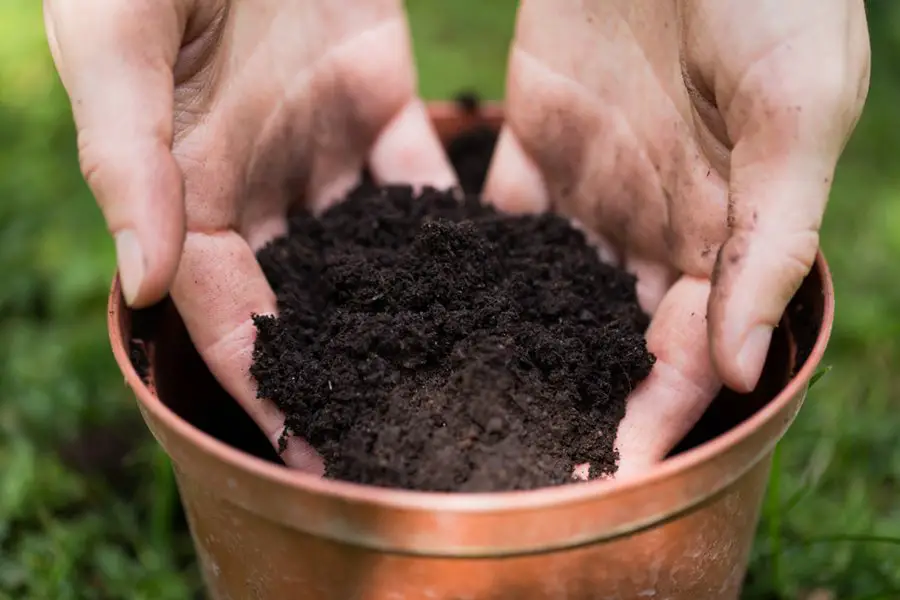
To improve soil drainage, organic matter such as compost or aged manure can be incorporated. These additions not only enhance drainage but also provide essential nutrients to support herb growth. Aim to add approximately 2 to 4 inches of organic matter and mix it thoroughly into the top 6 to 8 inches of soil. This will ensure that the nutrients are distributed evenly and readily available for the herbs.
Another critical aspect of soil preparation is addressing the nutrient requirements for optimal herb growth. Conducting a soil test can help identify any deficiencies and tailor the amendments accordingly. Generally, herbs benefit from a balanced fertilizer consisting of equal parts nitrogen, phosphorus, and potassium. However, it is essential to refer to specific herb requirements as some may have specific nutritional needs. By adequately preparing the soil and meeting the appropriate nutritional requirements, you will lay the foundation for healthy and thriving herb growth in your garden.
Understanding the Importance of Sunlight and Watering
Sunlight and watering are two crucial factors that determine the health and vitality of your herbs. Understanding their importance is essential for successful herb growth. Sunlight is the primary source of energy for plants, driving the process of photosynthesis. It provides the necessary light spectrum that enables herb plants to produce their food and thrive. Most herbs prefer full sun exposure, which is defined as at least 6 hours of direct sunlight each day. However, some herbs, such as parsley and cilantro, can tolerate partial shade. To ensure optimal sunlight exposure, choose a location for your herb garden where it will receive ample sunshine throughout the day.
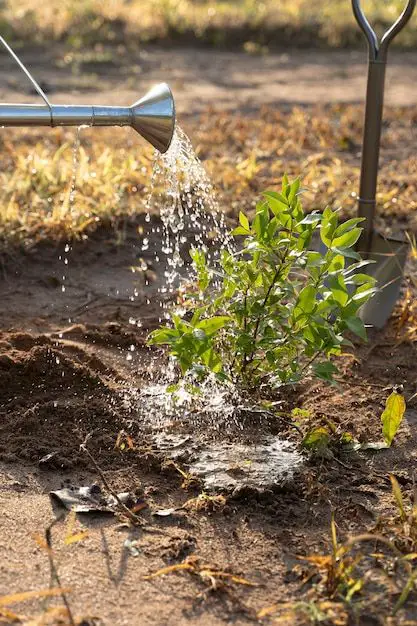
In addition to sunlight, watering plays a vital role in the growth and development of herbs. Water is the lifeblood of plants, transporting nutrients and ensuring proper cell function. While herbs require an adequate amount of water, it is crucial not to overwater them, as it can lead to root rot and other diseases. The frequency and amount of watering will depend on various factors, including the type of herbs, soil type, and weather conditions. As a general guideline, herbs should be watered when the top inch of soil feels dry to the touch. It is advisable to water deeply, allowing the water to penetrate the soil and reach the root system. Proper watering practices, coupled with appropriate sunlight exposure, will ensure that your herbs flourish and thrive in your home garden.
Exploring Different Methods of Propagating Herbs
Propagating herbs is an exciting and rewarding process that allows you to expand your herb garden without spending a fortune on new plants. There are several methods of propagation to choose from, each with its benefits and considerations. One common method is through stem cuttings, which involves taking a healthy stem from an existing herb plant and encouraging it to root and grow on its own. This method is particularly effective for herbaceous plants like basil, mint, and rosemary.
| Propagation Method | Description |
|---|---|
| Seed Propagation | – Sow seeds directly in soil or seed trays. |
| – Provides genetic diversity but may take longer to establish. | |
| Cutting Propagation | – Cut a healthy stem and root it in soil or water. |
| – Faster than seeds; produces genetically identical plants. | |
| Division | – Divide mature plants into sections, each with roots. |
| – Suitable for perennials and helps rejuvenate crowded plants. | |
| Layering | – Bend a low branch to the ground, encouraging roots before detaching. |
| – Useful for plants with flexible branches like mint or thyme. | |
| Root Division | – Separate plant clumps into sections, each with roots. |
| – Common for herbs with clumping growth patterns. | |
| Suckers/Offsets | – Propagate from offshoots or suckers growing from the main plant. |
| – Common for herbs like basil; ensures genetic similarity. | |
| Grafting | – Join a herb cutting onto a rootstock of a related plant. |
| – Used for specific varieties or to improve disease resistance. |
To propagate herbs through stem cuttings, select a stem from the parent plant that is around 4 to 6 inches in length and free from any signs of disease or damage. Using a sharp knife or secateurs, make a clean cut just below a leaf node, which is where the leaf meets the stem. Remove any lower leaves on the cutting, leaving only a few leaves at the tip. Dip the cut end into a rooting hormone powder to promote root development. Then, insert the cutting into a moistened potting mix or a mix of perlite and vermiculite, ensuring that at least half of the cutting is buried in the soil. Place the pot in a warm and well-lit area, making sure to keep the soil consistently moist but not waterlogged. Within a few weeks, you should start to see new roots forming, indicating that your herb is successfully propagating.
Providing Adequate Nutrients for Herb Growth
When it comes to providing adequate nutrients for herb growth, it is essential to understand the specific needs of different herbs. Each herb has unique nutritional requirements that must be met to ensure optimal growth and healthy development. Providing the right balance of nutrients will not only support the overall growth of the herb but also enhance its flavor and aroma, making it more enjoyable to use in culinary preparations.
One of the key nutrients that herbs require is nitrogen. Nitrogen plays a crucial role in promoting vigorous leaf growth, which is particularly important for herbs like basil, parsley, and cilantro. By incorporating nitrogen-rich fertilizers into the soil or using organic compost, you can ensure that your herbs receive an adequate supply of this essential nutrient. However, it is important to strike the right balance, as excessive nitrogen can lead to excessive leaf growth at the expense of flavor and essential oil production. So, it is crucial to follow the recommended dosages and apply fertilizers accordingly.
Another vital nutrient for herb growth is potassium. Potassium aids in root development, improves disease resistance, and enhances the overall flavor and aroma of herbs. Herbs such as rosemary, sage, and oregano benefit greatly from potassium supplementation. This nutrient can be provided through potassium-rich fertilizers or by incorporating organic matter such as banana peels or wood ash into the soil. Regular soil testing can help determine the potassium levels and guide you in providing the right amount of this nutrient for your herbs. Remember, maintaining a balanced nutrient profile is crucial for the health and productivity of your herb garden.
(Note: The complete article will cover other nutrients and their importance, along with specific recommendations for different herbs.)
Pruning and Harvesting Techniques for Healthy Herbs
Pruning and harvesting are essential techniques for maintaining the health and productivity of your herb garden. By employing proper practices, you can ensure the longevity of your herbs and maximize their flavor and aroma.
- Regular Harvesting: Harvest herbs regularly to encourage bushier growth and prevent flowering, which can affect flavor.
- Pinching Tips: Pinch off the tips of herb stems to promote branching, resulting in a fuller and more compact plant.
- Remove Flower Buds: Remove flower buds promptly to redirect the plant’s energy into foliage production and maximize flavor.
- Trimming Dead or Yellow Leaves: Regularly trim dead or yellow leaves to maintain plant health and appearance.
- Morning Harvesting: Harvest herbs in the morning when essential oil concentrations are highest, enhancing flavor.
- Sterilize Pruning Tools: Use clean and sharp pruning tools to prevent the spread of diseases, ensuring a clean cut.
- Avoid Overharvesting: Harvest no more than one-third of the plant at a time to avoid stressing the herb.
- Prune After Flowering: For perennial herbs, prune after flowering to rejuvenate the plant and encourage new growth.
- Shape the Plant: Prune to shape the herb plant, creating a more aesthetically pleasing and compact appearance.
- Dry or Preserve Excess Harvest: Preserve excess harvest through drying, freezing, or making herb-infused oils for later use.
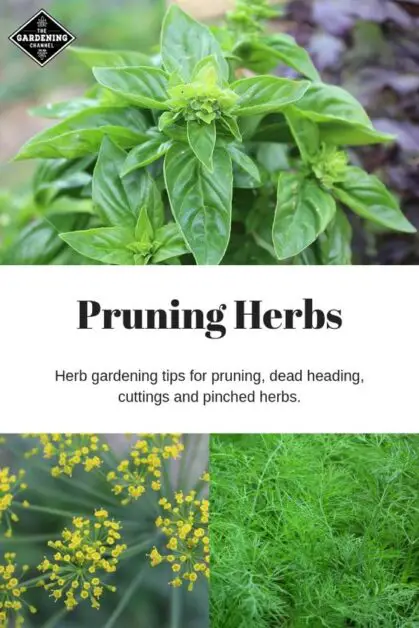
When it comes to pruning, it is important to remove any dead or damaged foliage regularly. This not only improves the overall appearance of your plants but also prevents the spread of diseases. Additionally, pruning helps stimulate new growth and encourages a bushier and more robust plant. As a general rule, you should aim to prune your herbs by removing around one-third of their foliage from time to time. However, it is crucial to be mindful of the specific pruning requirements of each herb, as some may benefit from more frequent trimming while others require less intervention.
Harvesting your herbs at the right time is equally important. Be sure to harvest your herbs early in the morning when their essential oils are at their peak. To do this, use a sharp pair of pruning shears or scissors to cut just above a node or leaf. By removing the top foliage, you encourage further growth and prevent your herbs from becoming leggy. Additionally, harvesting promotes a fuller and bushier plant. To avoid overharvesting, it is recommended to harvest no more than one-third of the plant at a time, allowing it ample time to recover before the next harvest. Always remember to wash and dry your herbs thoroughly before storing or using them.
Preventing Common Pests and Diseases in Your Herb Garden
The health and vitality of your herb garden can be greatly impacted by pests and diseases. Understanding how to prevent and address these issues is vital to ensuring the success of your garden. By implementing a few key strategies, you can minimize the risk of infestations and keep your herbs thriving.
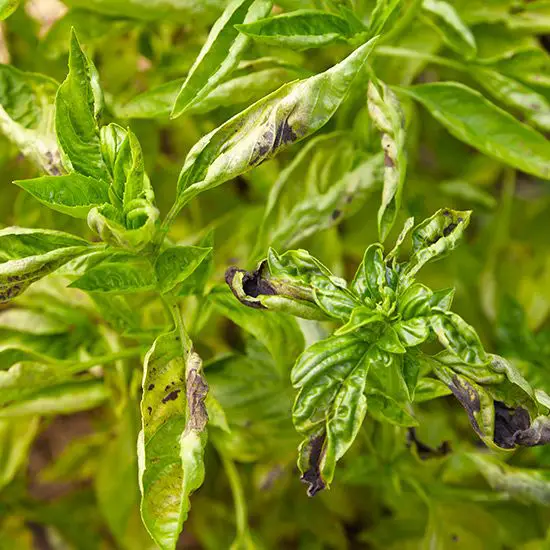
One effective way to prevent pests and diseases is to practice good garden hygiene. Regularly clean and sanitize your gardening tools, including pots, trays, and pruning shears, to eliminate any potential sources of contamination. Additionally, keep your garden free from debris and remove any dead or diseased plant material promptly.
Another important aspect of prevention is maintaining proper spacing between your herbs. Overcrowding can create an ideal environment for pests and diseases to thrive, as airflow is restricted and plants are more susceptible to stress. Aim to provide adequate space for each herb to grow and flourish, which will not only prevent infestations but also promote overall plant health.
Utilizing Companion Planting for Enhanced Herb Growth
Companion planting is a useful technique that can significantly enhance the growth and health of your herb garden. By strategically combining certain plants, you can create a symbiotic relationship that benefits each plant’s growth while deterring pests and diseases. This natural method of pest control eliminates the need for harmful pesticides and fosters a more balanced and sustainable ecosystem within your garden.
One example of companion planting for enhanced herb growth is the combination of basil and tomatoes. These two plants have a mutually beneficial relationship, as the strong scent of basil helps repel pests that are common to tomatoes, such as aphids and whiteflies. At the same time, the tomato plant provides shade for the basil, which prefers a slightly cooler environment. Planting these two together not only improves their overall growth and vitality but also enhances the flavor of the tomatoes when used in culinary applications.
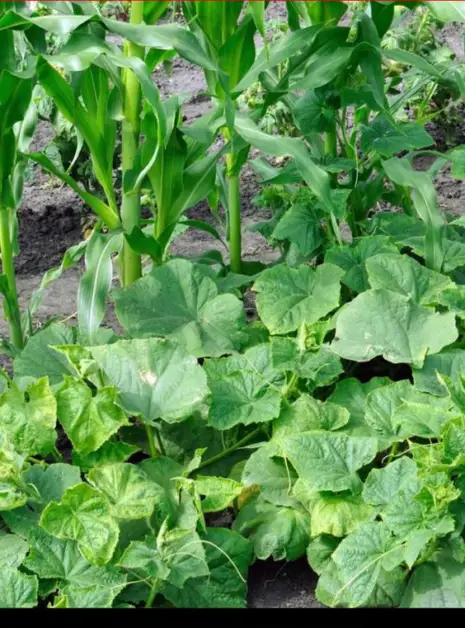
When considering companion planting, it is important to research and choose suitable combinations that align with the specific needs and preferences of your herbs. By understanding the unique qualities of each herb and its compatibility with other plants, you can create a harmonious garden that maximizes growth, minimizes pest issues, and produces an abundance of fragrant and flavorful herbs. So, why not explore the world of companion planting and unlock the full potential of your herb garden?
• Companion planting is a technique that enhances the growth and health of herb gardens
• Strategic combinations of plants create symbiotic relationships that benefit each plant’s growth while deterring pests and diseases
• This natural method eliminates the need for harmful pesticides and fosters a balanced and sustainable ecosystem in your garden
• Basil and tomatoes are an example of companion planting for enhanced herb growth
• The strong scent of basil repels pests common to tomatoes, such as aphids and whiteflies
• Tomatoes provide shade for basil, which prefers cooler environments
• Planting these two together improves their overall growth, and vitality, and enhances tomato flavor in culinary applications
• Research suitable combinations based on the unique qualities and preferences of your herbs
• Create a harmonious garden that maximizes growth, minimizes pest issues, and produces fragrant and flavorful herbs
Creating a Sustainable Watering and Fertilizing Schedule
When it comes to creating a sustainable watering and fertilizing schedule for your herb garden, it’s important to find the right balance between providing enough moisture and nutrients without overdoing it. Some herbs prefer slightly drier conditions, while others thrive with more moisture. Understanding the specific needs of each herb will help you tailor your watering schedule accordingly.
One key factor to consider is the soil type and drainage. Herbs generally prefer well-drained soil that allows excess water to flow away. If your soil tends to retain water, you might need to amend it with organic matter, such as compost or aged manure, to improve its drainage. On the other hand, if your soil is sandy and drains too quickly, increasing the organic matter content can help retain moisture.
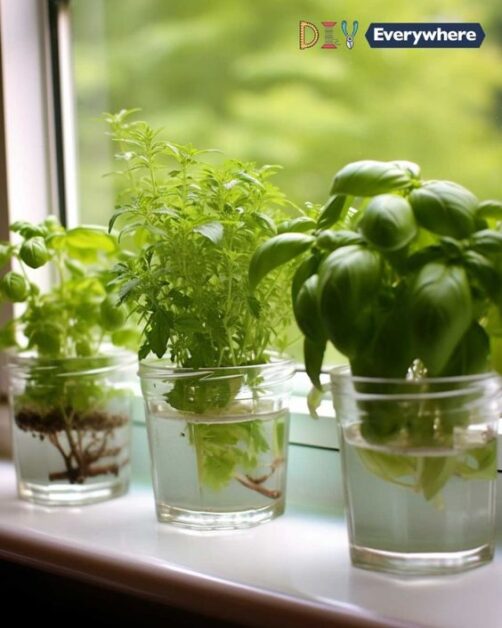
When it comes to fertilizing, herbs generally don’t require excessive amounts of nutrients. Over-fertilizing can lead to poor flavor and even damage to the plants. A good rule of thumb is to apply a balanced organic fertilizer, such as compost or well-rotted manure, once or twice a year. This will help provide a steady supply of nutrients without overwhelming the herbs. Additionally, regular foliar feeding with a diluted organic liquid fertilizer can give your herbs a boost during the growing season.
By understanding the unique watering and fertilizing needs of your herb garden, you can create a sustainable schedule that promotes healthy growth and abundant flavor. It’s important to monitor the moisture levels of the soil and adjust your watering accordingly, taking into account the specific requirements of each herb. Likewise, providing a balanced supply of nutrients through organic fertilizers will help your herbs thrive without the risk of over-fertilization. With a little planning and attention to detail, your herb garden will reward you with delicious flavors and a beautiful display of nature.
Harvesting and Storing Fresh Herbs for Longevity
When it comes to harvesting herbs for longevity, timing is everything. The best time to harvest herbs is in the morning, right after the dew has dried but before the sun gets too strong. This is when the essential oils in the herbs are at their peak, providing maximum flavor and aroma. To harvest, simply cut the stems of the herbs about 1 to 2 inches above the soil level, using sharp and clean pruning shears. Avoid tearing or ripping the leaves, as this can damage the plant and reduce its lifespan.
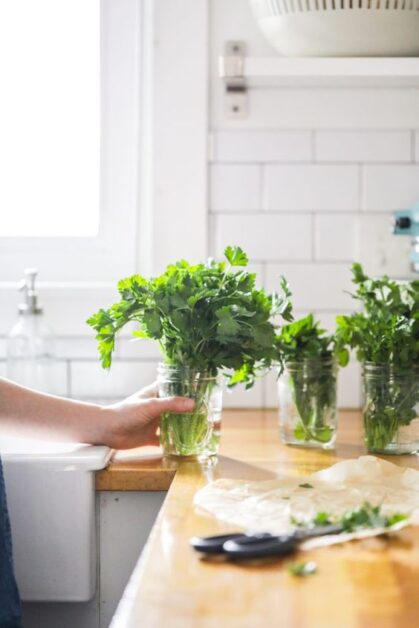
Once the herbs are harvested, it’s important to store them properly to preserve their freshness and flavor. One method is to wrap the herbs in a damp paper towel and place them in a plastic bag in the refrigerator. This will keep the herbs hydrated and prevent wilting. Another option is to dry the herbs by hanging them upside down in a cool, dry place with good air circulation. Once dried, remove the leaves from the stems and store them in airtight containers away from direct sunlight and moisture. This will allow you to enjoy your homegrown herbs for months to come.
Exploring Creative Ways to Use Fresh Herbs in the Kitchen
Fresh herbs are not only a delightful addition to any home garden, but they also provide an exciting opportunity to explore creative culinary possibilities in the kitchen. Whether you are an experienced chef or a novice cook, the versatility of fresh herbs can elevate your dishes to new heights. By incorporating a variety of herbs into your recipes, you can add unique flavors, vibrant colors, and tantalizing aromas that will impress your family and guests.
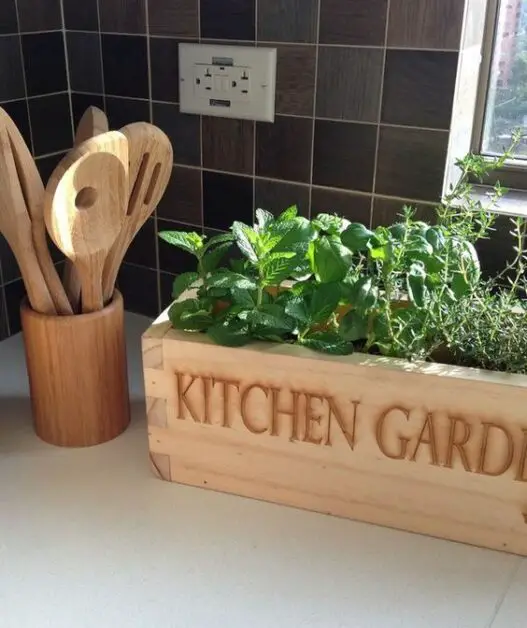
One way to unleash the full potential of fresh herbs is by experimenting with different combinations in your dishes. For example, a blend of basil, parsley, and oregano can create a Mediterranean-inspired flavor profile that pairs beautifully with grilled meats and vegetables. Alternatively, the aromatic trio of thyme, rosemary, and sage adds depth and earthiness to hearty stews and roasted dishes. By playing around with these aromatic harmonies, you can awaken your taste buds and transform ordinary meals into extraordinary culinary experiences.
Additionally, consider using fresh herbs as a finishing touch to your dishes. Sprinkling chopped chives or cilantro over soups, salads, or even scrambled eggs can instantly brighten the flavors and add a burst of freshness. Garnishing desserts with delicate mint leaves or lavender buds can introduce intriguing floral notes that elevate the sweetness. Moreover, infusing oils or vinegar with herbs like basil, thyme, or tarragon can create a flavorful base for dressings, marinades, or dipping sauces. The possibilities are endless when it comes to incorporating fresh herbs into your culinary repertoire. So, why not venture out of your culinary comfort zone and embark on a flavorful adventure with these aromatic wonders? Stay tuned for more creative herb ideas in the kitchen!
Understanding the Health Benefits of Fresh Herbs
Fresh herbs not only add flavor and aroma to our culinary creations, but they also offer a wide array of health benefits. Packed with vitamins, minerals, and antioxidants, these fragrant plants have been used for centuries in traditional medicine to promote overall well-being. Basil, for example, contains high levels of vitamin K, which plays a crucial role in bone health and blood clotting. Moreover, studies have shown that the active compounds found in herbs like thyme and oregano possess antimicrobial properties, making them effective in combating certain types of bacteria. By incorporating a variety of fresh herbs into our diets, we can enhance both the taste and nutritional value of our meals while reaping the health benefits they provide.
In addition to their vitamin and mineral content, fresh herbs are also rich in essential oils, which give them their characteristic smell and taste. These oils not only contribute to the culinary experience, but they also offer therapeutic properties. For instance, rosemary has been found to improve memory and concentration, while lavender has a calming effect and is often used to alleviate stress and promote better sleep. The anti-inflammatory properties of herbs such as turmeric and ginger have gained attention, as they may help reduce the risk of chronic diseases like heart disease and cancer. As we explore the health benefits of fresh herbs, it becomes clear that they serve not only as a delightful addition to our dishes but also as a natural way to support our well-being.
for more details check the video given below:
What are some common pests that can affect herb gardens?
Some common pests that can affect herb gardens include aphids, slugs, snails, and caterpillars.
How can I prevent pests from damaging my herb garden?
To prevent pests from damaging your herb garden, you can use natural pest repellents such as neem oil or garlic spray. Additionally, regularly inspecting your plants for signs of pests and practicing good garden hygiene, such as removing dead leaves and debris, can help deter pests.
Can I grow herbs indoors?
Yes, many herbs can be successfully grown indoors. Choose herbs that thrive in indoor conditions, such as basil, mint, and parsley. Provide them with adequate sunlight or artificial light, and ensure proper watering and drainage.
Can I use chemical fertilizers in my herb garden?
While chemical fertilizers can be used in herb gardens, it is recommended to opt for organic fertilizers to maintain the health benefits of fresh herbs. Organic fertilizers, such as compost or worm castings, provide nutrients without introducing harmful chemicals to your plants.
How long can I store fresh herbs?
The storage duration of fresh herbs depends on the type of herb and proper storage methods. Generally, leafy herbs like basil and parsley can be stored for up to a week in the refrigerator. Drying or freezing herbs can extend their shelf life for several months.
What are some creative ways to use fresh herbs in the kitchen?
Fresh herbs can be used in a variety of creative ways in the kitchen. Some ideas include making herb-infused oils or vinegar, adding herbs to salads and dressings, incorporating them into marinades or herb butter, and using them as garnishes for soups, stews, and cocktails.
Are there any health benefits to consuming fresh herbs?
Yes, consuming fresh herbs can offer various health benefits. Different herbs contain unique properties that can support digestion, boost the immune system, reduce inflammation, and provide antioxidants. For example, mint can aid digestion, while basil has anti-inflammatory properties.
Can herbs be used for medicinal purposes?
Yes, herbs have been used for centuries for their medicinal properties. Some herbs, such as chamomile and lavender, are known for their calming effects, while others, like echinacea, are thought to boost the immune system. It is important to consult with a healthcare professional before using herbs for medicinal purposes.

Kanike Sreekanth, a prolific writer at SouthElMonteHydroponics, brings a unique blend of creativity and scientific rigor to the table. With a degree in Horticulture from a prestigious institution, Kanike’s expertise spans hydroponic farming, plant biology, and agricultural sustainability. Their passion for exploring innovative cultivation methods and promoting environmental stewardship drives them to uncover new insights in the realm of hydroponics. Kanike’s writing serves as a conduit for sharing their knowledge and inspiring others to embrace alternative farming practices for a more sustainable future.

